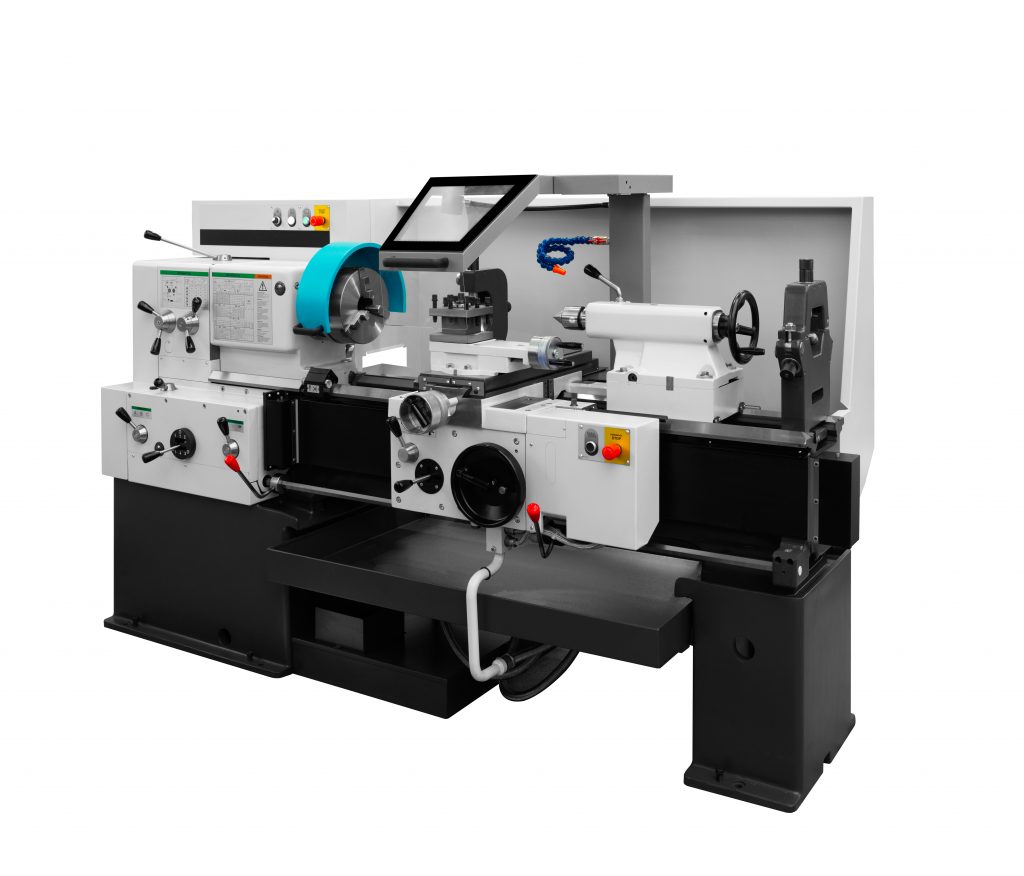Machining technology plays a fundamental role in modern manufacturing, offering precision and versatility in shaping materials for countless applications. The complexity and ingenuity behind machines like lathes and milling machines are essential for creating components that meet exacting standards. Delving into how these tools operate and their unique capabilities reveals why they remain indispensable in the industry.
What is a lathe?
A lathe is a versatile machine tool used primarily for shaping and machining materials like metal, wood, and plastic into the desired shape. It operates by rotating the workpiece around a fixed axis while various cutting tools are applied to remove material, creating symmetrical objects like cylindrical parts, cones, or threads. The lathe can perform a range of tasks, including cutting, sanding, knurling, drilling, and deformation, making it an essential piece of equipment in manufacturing, metalworking, and woodworking industries.
Types of lathes
Lathe machines come in various types, each designed for specific functions and levels of precision. Here are some common types of lathe machine tools:
- Engine Lathe: One of the most common types of lathes, used in general-purpose metalworking. It features a robust design and can handle a wide range of materials and operations like turning, facing, and threading.
- Turret Lathe: Ideal for mass production, this lathe has a rotating turret that holds multiple cutting tools. It allows for efficient, continuous machining without needing to stop and change tools manually, making it suitable for producing identical parts in large quantities.
- CNC (Computer Numerical Control) Lathe: A highly advanced type of lathe that is controlled by a computer. It provides precise and automated control for complex machining processes, often used in high-volume production environments and for parts requiring intricate detail.
- Bench Lathe: A smaller, compact version of the lathe, typically used for light-duty work. It is often found in workshops for machining smaller parts, such as in model-making or intricate metalworking projects.
- Toolroom Lathe: Known for its high precision, this lathe is used in tool and die-making, where accuracy and surface finish are crucial. It has finer controls and is often used for making or repairing tools and dies.
- Special Purpose Lathes: These lathes are designed for specific applications, such as wheel lathes for railway wheels, capstan lathes for repetitive tasks, or automatic lathes used for high-speed production of small parts.
- Wood Lathe: Specially designed for woodworking, this lathe is used for shaping and carving wood pieces. It is widely used in furniture-making, wood turning, and crafting decorative items.
Each type of lathe machine tool has unique features tailored to its intended use, contributing to the machine’s versatility across different industries and applications.
What is a milling machine?
A milling machine is a precision machine tool used in manufacturing to shape and cut materials, such as metal, wood, or plastic. It works by rotating a cutting tool that systematically removes material from a workpiece, which is usually clamped in place on the machine’s table. This allows for the creation of flat surfaces, grooves, slots, and complex geometries with high accuracy.
Milling machines are versatile and can perform a wide range of operations, including drilling, contouring, and cutting intricate patterns. They are essential for producing parts with detailed features and can be either manually operated or automated through CNC (Computer Numerical Control) systems, which provide precise control over the cutting process.
Types of milling machines
Milling machines come in various types, each designed for specific applications and levels of complexity. Here are the main types:
- Vertical Milling Machine: In this type, the cutting tool is mounted vertically, and the table can move in the X, Y, and sometimes Z axis. It is commonly used for operations such as drilling, end milling, and cutting slots. The vertical orientation is ideal for precision work and fine detailing.
- Horizontal Milling Machine: This machine has a horizontally oriented spindle, and the cutting tool moves parallel to the table. It is well-suited for heavy-duty cutting and material removal, making it ideal for tasks like cutting grooves and slots or working on large and heavy workpieces.
- Knee-Type Milling Machine: A versatile machine where the workpiece is supported on a vertically adjustable knee that moves up and down along the column. It can be either a vertical or horizontal type and is widely used in general-purpose applications.
- Bed-Type Milling Machine: Unlike knee-type machines, the bed of a bed-type milling machine is fixed, providing stability for heavy and large workpieces. The spindle moves along the X and Y axes, making it suitable for more robust and heavy-duty milling operations.
- Planer-Type Milling Machine: Similar to a planer, this machine is designed for heavy-duty work and can handle extremely large workpieces. It has multiple spindles and is often used in industries where large parts, such as engine blocks, need to be machined.
- CNC Milling Machine: A computer-controlled milling machine that provides precision and repeatability in complex machining processes. CNC machines can perform various milling operations, such as contouring, drilling, and slotting, with high accuracy, making them essential in modern manufacturing.
- Universal Milling Machine: A machine that features a rotating table, allowing it to mill at various angles and making it suitable for more complex machining projects. It is versatile and often used in tool rooms to create custom parts and fixtures.
Each type of milling machine has specific advantages and applications, making them crucial machine tools in various manufacturing processes, especially for creating complex shapes.
The difference between lathes and milling machines
Lathes and milling machines are both essential machine tools in machining but differ significantly in their operations and applications.
- Operation: The key difference between a lathe and a milling machine lies in how they work. A lathe rotates the workpiece around a fixed axis, and a stationary cutting tool is used to shape or remove material from the workpiece. This makes lathes ideal for creating cylindrical or symmetrical shapes, such as shafts, threads, or rings. In contrast, a milling machine holds the workpiece stationary while a rotating cutting tool moves across or into the material to remove material, which allows for the creation of more complex parts and shapes, including slots, grooves, and intricate designs.
- Applications: Lathes are best suited for tasks that require working on the outside or inside of a round object, like turning or threading. Milling machines, on the other hand, excel at making flat surfaces, shaping complex geometries, or drilling holes. The versatility of milling machines allows for machining a wider variety of parts and features. While lathes are more focused on symmetrical objects, milling machines can produce irregular shapes and detailed components.
These primary differences make lathes and milling machines complementary machine tools in a shopfloor, each serving distinct roles in the manufacturing process.
Conclusion
Lathes and milling machines each play a vital role in material fabrication, with distinct operational methods and applications. Lathes excel in producing cylindrical and symmetrical components, whereas milling machines offer versatility in shaping complex and irregular parts. Together, they form a comprehensive toolkit for manufacturers, ensuring efficiency and precision in modern machining tasks.










